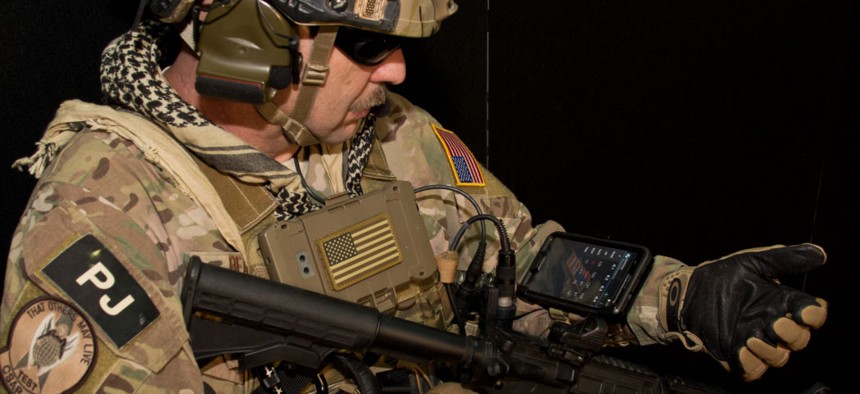
Widespread battle-ready wearables likely still far off
Despite technology improvements, an Air Force scientist says a majority of wearable devices aren’t ready for the field.
Top Pentagon leaders have talked about how the Defense Department is no longer driving innovation. Rather, innovation and emerging technologies are coming out of the commercial sector. The issue facing DOD now is making use of these technologies available to everyone around the world – particularly adversaries – faster than everyone else.
But problems exist with leveraging commercial solutions, many of which are not necessarily built to the same national security and ruggedization standards the government requires. Additionally, since profits drive the commercial space, the competitive nature inherent in this environment can cause companies to oversell their capabilities. “I can tell you at least 70 percent of the devices we tested do not work as advertised,” Rajesh Naik, chief scientist with the Air Force Research Laboratory and Air Force Material Command, said at the Defense One Technology Summit June 10.
Naik’s organization tries to understand cognitive, biological and physiological human performance of warfighters to address and discover benefits that can aid soldiers going forward. There has been a revolution with emerging technologies, robotics and human-machine teaming – the cornerstone of the Pentagon’s Third Offset Strategy. These solutions include sentient data implants and the BioStampRC Wearable Sensing Platform that measures biometric data and which was tested at AFRL last fall.
The Air Force also has used a device called BATDOK, for Battlefield Airmen Trauma Distributed Observation Kit, which is worn on the wrist and allows a user to keep track of medical information on multiple dismounted airmen as part of the Battlefield Air Targeting Man-Aided Knowledge, or BATMAN, demonstration program.
Naik noted that the Air Force has a “gold standard testing lab” to test commercial devices for a futuristic connected soldier. “We have tested every device that’s out there on the market and tested the validity of the device of what they claim in terms of the data that you can pull out,” he said, adding that nearly three quarters of these devices – which include anything from wrist wearables to chest-worn harnesses – don’t work as advertised. “There’s a lot of fudging of the data,” Naik said.
The news isn’t all bad, however. Naik was sure to point out that the microelectronics industry is making significant contributions here and there are advancements in communications devices.
One of the biggest challenges within this space is extracting actionable data from wearables and sensors. “We’re going to be sure that as [warfighters] use these devices that they can make some sense of the data they are getting out of that,” Naik said. “I see changes in heart rate [but] does it really lead to some actionable information that I can give to the warfighter, the commander about someone’s status. Walking 10,000 steps doesn’t mean anything, right? What does that mean? I’ve done my 10,000 steps but is the right amount of steps it took, is taking stairs better than just walking?”
For the time being, these devices are not being used in combat situations, though Naik said they are working with the Special Operations community to gather and make sense of data collected in training exercises, which can then be used to create an appropriate training regimen for warfighters.

